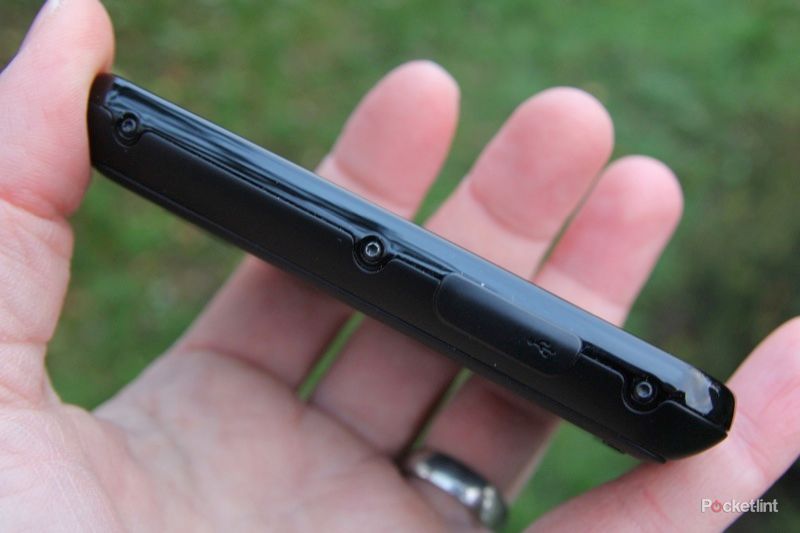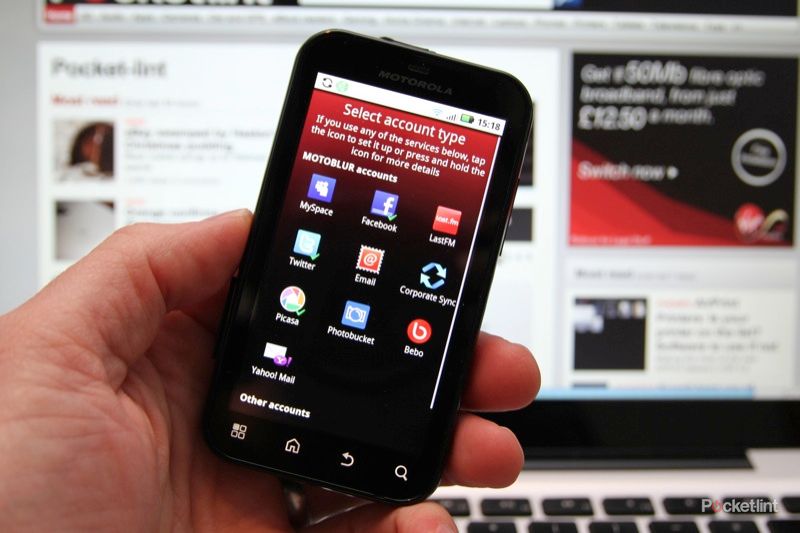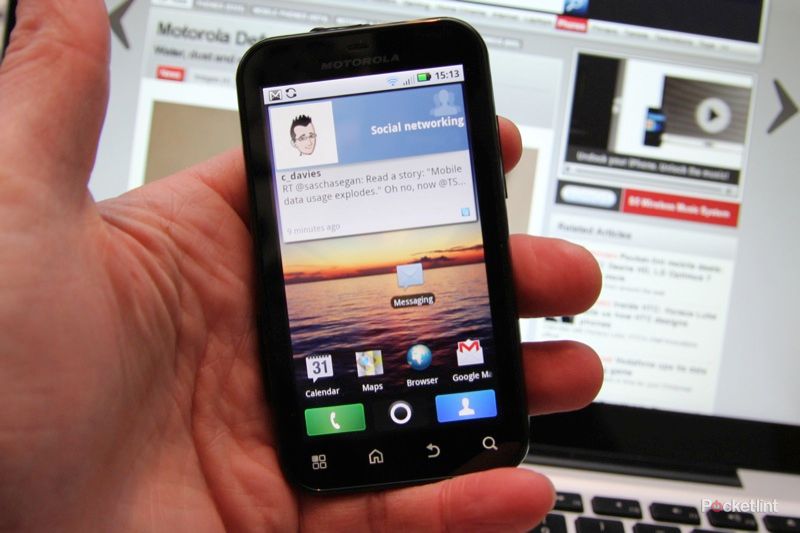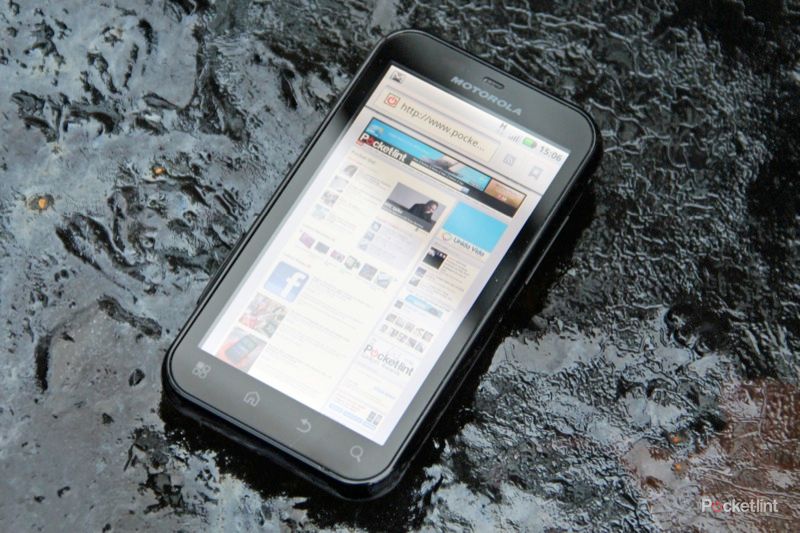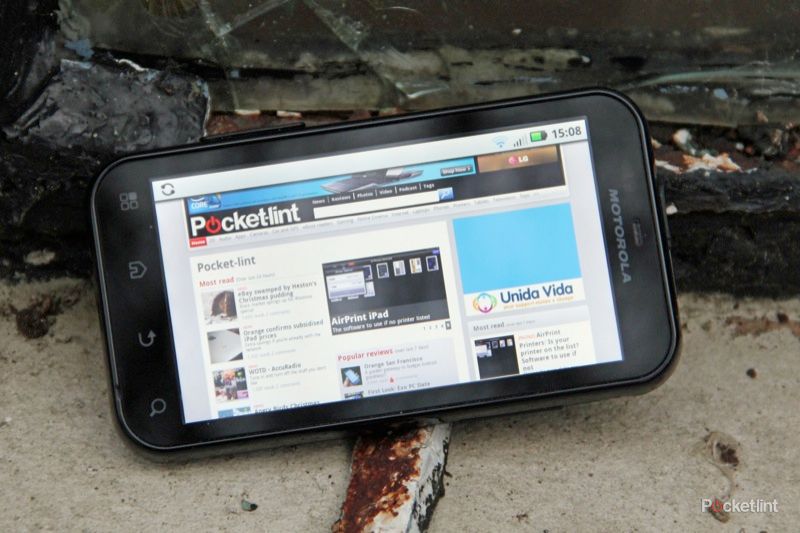The Motorola Defy is an Android 2.1 tough (ish) phone adding a little hardcore to its connected Motorola Blur experience. We can’t help but be attracted to its solid features, especially when sat alongside some Android rivals that look pretty, but probably wouldn’t fare well in a scrap.
Our quick take
Overall the Motorola Defy is an impressive and likeable handset. Some of the Motorola Blur elements get a little lost, so we quickly found ourselves adding additional applications to serve up a more conventional social networking platter. But we do like the design and think there is a certain something about the Defy that does make it distinctive.
It would be better if it offered up Android 2.2 from the off and the lack of 720p video capture sets it behind the latest rival releases, but that said, the Motorola Defy is likely to last the length of your contract and see itself updated in the future.
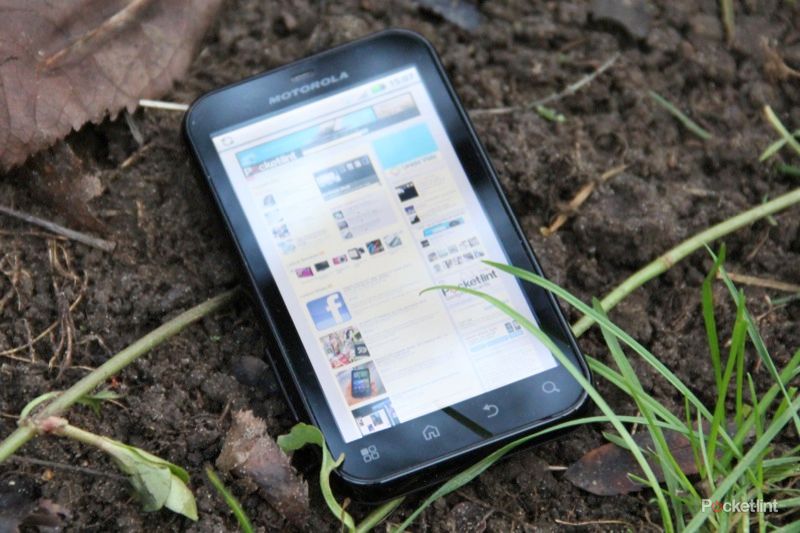
Motorola Defy - 4.0 / 5
| FOR | AGAINST |
|---|---|
|
|
The rubberised backplate locks securely in position and the Defy also bares the hallmark of ruggedness in the form of exposed screw heads around the edges. Nothing makes you look more rugged than having bolts sticking out the side of you, but the mainstay of the protection probably comes from the port covers - meaning the USB and 3.5mm jacks are protected.
In reality, covering these ports means they stay free from debris, but you will be forever plugging and unplugging them as you charge the device, which is something you’ll need to do pretty much every day, as is common on a 3.7-inch touchscreen device.
That protection offers up the claim of being “lifeproof”; dustproofing, water-resistance and scratch resistance substantiate these claims, but this isn’t a Sonim or JCB toughphone. Instead you have a phone that will stand being soaked at a festival or dropped on the beach without too much concern. It also doesn’t have the bulk of those aforementioned models, measuring a pocketable 59 x 107 x 13.4mm and weighing just 118g.
In truth the “tough” status is probably as much about being distinctive as anything else, rather than running the risk of being just another Android handset. The other defining feature of the Motorola Defy is Motorola’s Blur software. For those that don’t know, Blur allows you to connect with your social networks and pull all that information into your phone.
In the past we criticised Blur for being a little too full-on. It delivers up “status updates” from Facebook and Twitter, whilst also linking in to MySpace, Bebo, Picasa and so on. The nice thing about Blur is the easy level of filtering and the ability to view in a simple list - something that Sony Ericsson’s Timescape failed to deliver on the Xperia X8 that we just reviewed. You can also easily filter this list, or toggle various different settings to only view the content you want.
Of course you can opt out of a lot of Motoblur’s offering by simply not signing in, although the deep integration of Blur into the rest of the phone means you do miss out on many of the features the phone has to offer aside from the Google core. The contacts get a really rich treatment, meaning you can not only find your friend’s contact details, but also dive in to view their “connected accounts”, so you can poke someone on Facebook via your contacts list, for example. It doesn’t quite go the whole hog and start offering up their photos like HTC Sense does, but we like the feeling overall.
Coming with Blur are a range of Motorola widgets which can be dropped on to the customisable homepages. The homepages offer up seven pages to swipe through and customise, so you can drop shortcuts and those widgets as you see fit. Some of Motorola’s widgets are pretty smart, one of our favourites has to be the quick contact option. This lets you define what action you want to take for a specific person’s shortcut that you drop, and this could be to call the wife, or browse your employer’s Twitter feed for example.
The “Social networking” widget steps in where “Happenings” used to be seen and offers up one update at a time, so unless you happen to be glancing at your phone when it is showing something of interest, it is as good as useless. However, Motorola is really laying down the widget master stroke by also letting you change the size of widgets, for example you can drop in the calendar and decide you want it to fill half the page, and you can quickly change it to make it so. Motorola’s widgets might lack some of the gloss of HTC’s, but they are for the most part incredibly practical, and we like that.
But it doesn’t take long to scratch the surface of Blur and find it doesn’t complete the loop as much as we’d like. For example there is no in-built support for firing off a picture to Twitter, but you can send them direct to Facebook or Picasa, for example, direct from a picture. It means that from the “social networking” end you can’t do that much, but you’ll find those features through the photo gallery or as an option when you snap off a picture with the camera.
The dependence on an additional layer over the top of your favourite social networks means you lose out on the extra features they offer. There is no support for Facebook Places, for example, just as you can’t search Twitter or click on a #hashtag. The long and short of it is that you may well end up duplicating your services, installing alternative Twitter and Facebook clients just to get access to all the services they offer.
But Blur isn’t the only trick that Motorola has up its sleeve. The Motorola Defy is also DLNA savvy, offering to connect and share with your network media sources, allowing you to not only view content (on the phone or on another DLNA device) but to also save content to the phone from a network device. And if it can’t stream content, it will offer to save it locally, then play it. It’s a shame, in reality, that these connected talents don’t blend into the music or video players too and that the codec support is limited. Wider support is offered by downloading an alternative player from the Android Market and at least you get the option to save content to your phone to then play back. The Defy will attempt to play 720p footage, but it does struggle to achieve smooth playback throughout high definition videos.
Motorola’s tinkering goes much deeper than just a few choice apps and widgets. Like HTC, they have changed many aspects of the Android 2.1 foundation and for the most part we like those little tweaks to icons and so on. The experience is distinctive enough from raw Android to introduce some differentiation without hiding the core Android features. We’ve already started to hear that the Defy will see an update to Android 2.2 in 2011 (by which time we assume that Android 2.3 will be out) but until then you miss out on the latest headline features like Flash 10.1 video support, although Flash Lite is included, so this isn’t a significant failure.
The Motorola Defy is a reasonably powerful device too, so things move along at a decent pace. One oddity, though, was the unlock screen. Offering up the usual Android swipe to unlock, it didn’t seem to be a smooth action. This immediately gave us some concerns that the Defy would be a buggy device, but it didn’t seem to be the case. It seemed to just be the unlocking action that was lacking. Yes, it is possible to have the Defy to miss a step or two when you throw down a number of connected live widgets, but if you keep things realistic, you’ll find it runs without too many issues.
Sitting at the core of the Motorola Defy is an 800MHz processor and 512MB RAM although it lacks the power of the similarly clocked HTC Desire Z, due to the different hardware used. We found it to be fast enough in action however, with very little sign of delay when opening or switching applications.
Around the back of the Motorola Defy is a 5-megapixel camera with an LED flash - par for the smartphone course. The camera interface has been fully customised, offering a range of scene modes and effects, but unfortunately you have to swipe through the options, rather than being able to directly select the one you want. At any rate, the camera does a typically respectable job in good light with still subjects, but won’t put your compact camera to shame.
The video offering is somewhat underwhelming, offering only 640 x 480 video capture at a smooth 30fps, falling short of the HD capture offered by rivals. This might change with an update to Android 2.2, but you also don’t get autofocus in video either.
The music player offers up access to the FM radio as well as Shoutcast Radio and music video, and it's nice to see these things together for simple access. There is also an included community element powered by TuneWiki, so you can find additional music content pretty easily. A SoundHound song identifier is also bundled in the music player. As mentioned, adding network access here would be the icing on the cake. The external speaker offers reasonable quality, but you’ll get much better results if you replace the bundled hard plastic headphones with some of your own. There is no music control from the lock screen, so if you are looking to quickly change tracks you’ll have to unlock the phone first; volume, however, can be changed at any time.
The Motorola Defy comes preloaded with Swype, which might speed up your text entry if this is a system that you are familiar with, or are willing to put in the time to master. Of course you can just tap in text using the regular keyboard (or install a third-party keyboard). The Defy offers an excellent touch response (once the haptics are disabled) and we found that in portrait the keyboard was just about big enough to bash out a message without too many mistakes. Flip over to landscape and you’ll have plenty of space to send lengthy replies.
Not only is that screen nice and responsive, but the 854 x 480 pixel resolution 3.7-inch capacitive display looks good too. There is plenty of brightness and it has the silky smooth and solid feeling that edge-to-edge Gorilla Glass brings. The colours are nice and vibrant, with the screen size giving you plenty of space to roam around. It might be bettered by larger devices when it comes to browsing, but the Android browser still delivers respectable performance, fast to load pages and offering up double tap zooming as well as multi-touch pinch zooming.
The same pinch zooming is also offered in Google Maps, with the Defy’s onboard GPS meaning you get to experience the efforts of the Google Maps Navigation, if you need it. The Defy is also equipped with a host of other sensors, auto-rotating the screen when you move the phone around and so on.
When it comes to calling, the Motorola Defy isn’t the most comfortable of phones to make a call with because of the hard top edge. Like so many other smartphones, this digs into your ear and rapidly becomes uncomfortable. Motorola has also incorporated CrystalTalk Plus, which claims to make voices clearer. It sounds a little odd and at times we had to check we weren’t using the speakerphone because it sounded distinctly different from other mobile phones.
The Defy is also pretty impressive when it comes to battery life. We managed to get over a day from the Defy in regular use, meaning we didn’t have to charge it quite as often as some of the larger rivals we’ve seen recently. This is perhaps due to the inclusion of a 1540mAh battery. As we said previously, the battery sits locked under the back cover, itself covering the SIM card and microSD card - so this isn’t a hot-swappable handset. There is 2GB of internal memory in addition to a bundled 2GB micoSD card, easily swapped for a higher capacity if you want more storage.
To recap
Overall the Motorola Defy is an impressive and likeable handset. Some of the Motorola Blur elements get a little lost, so we quickly found ourselves adding additional applications to serve up a more conventional social networking platter. But we do like the design and think there is a certain something about the Defy that does make it distinctive

